Contents
HDMI is one of the most common interfaces used in the field of audio and video transmission. However, HDMI cables have limitations for long-distance transmission. How do you break the length restriction and deliver audio and video signals to distant screens using HDMI technology? HDMI over Ethernet serves as an effective solution for scenarios where standard HDMI cables are not long enough. In the following content, we’ll further explore how HDMI over Ethernet works, its benefits and applications.
What is HDMI over Ethernet?
Short for High-Definition Multimedia Interface, HDMI is a standard for transmitting digital audio and video data from source devices to various output equipment such as TVs and computer monitors.
HDMI over Ethernet, also known as HDMI over IP or AV over IP, is a combination of HDMI and Ethernet technology to efficiently distribute and transmit audio and video signals over long distances. HDMI over Ethernet works by using dedicated equipment to convert HDMI signals into data packets, which are then converted back into HDMI signals at the receiving end. For example, it can send HDMI signals from source devices like Blu-ray players and computers to displays via Ethernet cables. HDMI over Ethernet has gradually been widely used in conference rooms, home theaters, and control rooms.
How Does HDMI over Ethernet Work?
The transmitter and receiver (HDMI over Ethernet extenders) are required for HDMI over Ethernet to work. The transmitter unit works as an encoder, receiving source HDMI signals from a device such as a laptop, computer, or Blu-ray player. Then the encoder converts them into a format suitable for Ethernet transmission. In contrast, the receiver unit acts as a decoder, converting the data back into HDMI signals for the connected display device. Besides the transmitter and receiver, an Ethernet switch is often used to send data packets to different destination devices.

Benefits of Using HDMI over Ethernet
Stable Long-distance Transmission: HDMI over Ethernet provides reliable and stable transmission, ensuring signal integrity over long distances. It breaks the distance limits of traditional HDMI cables, facilitating the remote transmission of HDMI signals in large offices, home theaters, and commercial spaces.
Better Cable Management: Using HDMI over Ethernet technology instead of laying out too many traditional HDMI cables helps simplify cable management and maintain neatness and efficiency. In addition, Ethernet cables are more flexible to install than HDMI cables, making them easier to route.
Cost Saving: Ethernet cables are widely used in households, offices, and buildings, making it feasible to set up HDMI over Ethernet based on the existing infrastructure and reduce the cost of installing new network systems for HDMI. An HDMI via Ethernet system is also scalable. If the system needs to be expanded, you only need to add new transmitters and receivers rather than replacing the entire matrix.
Convenient Control: HDMI over Ethernet technology provides a variety of solutions for managing audio-visual (AV) systems, including HDMI KVM extenders, PC software, applications, etc. This makes it very convenient for controlling devices and displays.
High Adaptability: A traditional AV system usually requires different equipment for different environments; while an AV over IP system can be more flexible. You only need to add new transmitters and receivers in the AV over IP system and make them integrated into the system.
6 Things to Consider When Choosing HDMI over Ethernet Extenders
You will need at least one HDMI over Ethernet extender pair to transmit HDMI signals over Ethernet cables. However, facing the wide variety of HDMI over Ethernet extenders on the market, you may feel dazzled. Here we outline some essential factors in choosing an HDMI over Ethernet extender based on your specific purpose, scenario, and budget.
- Types and Functions
HDMI over Ethernet extenders based on different technologies and Ethernet cables can run the HDMI signal over varying distances. Currently, HDMI over Cat6 is the most common HDMI over Ethernet extender with the largest compatibility. However, you should opt for the correct extender depending on your existing network. For example, if you have a Cat5 Ethernet network, you might as well choose HDMI over Cat5 extenders. KVM and Matrix Extenders over Ethernet provide you with additional functionality and layout capability. In addition, HDMI over Ethernet extenders with infrared signal transfer capabilities are also popular, which enables remote control of video sources.
- Resolution
To transmit 8K, 4K, or 1080p video, you will of course need different ranks of devices. Check and make sure the HDMI over Ethernet extender can support the resolution you want. Also, the transmission distance affects this capability: with the same equipment being used, transferring video with higher quality may sacrifice some transmission distance.
- Bandwidth
High-resolution and high-refresh-rate video content requires high bandwidth, so it is crucial to ensure that the HDMI extender can meet the requirement of data processing during the transmission. Selecting HDMI over Ethernet extenders with greater bandwidth ensures smooth transmission and low latency.
- Power
Both the transmitter and receiver units of an HDMI over Ethernet extender need to be connected to a power supply. For applications with difficult access to power sources, HDMI over Ethernet extenders featuring Power over Cable (PoC) or Power over Ethernet (PoE) functions are preferred, which only require additional power on one end of the extender pair.
- Compatibility and Scalability
You should also ensure that the HDMI extender is compatible with your source devices, display devices, cables, and network equipment or a future upgrade. Consider if you can easily add more transmitters and receivers to expand your setup in the future.
- Installation and Control
Consider the convenience of installation and control. It is recommended to select those HDMI over Ethernet extenders with a plug-and-play design and user-friendly configuration. Check the management and control option and you can opt for extenders with management software for easy control.
Applications of HDMI over Ethernet
- Home Theater: HDMI over Ethernet helps you set up your home theater with ease. It provides you with a seamless home entertainment experience by distributing high-quality audio-visual content from one source device to multiple rooms.
- Gaming Entertainment Space:Immersive games like virtual reality (VR) require a spacious and organized gaming environment without sacrificing smoothness and image quality. HDMI over Ethernet helps break the distance limit between the display screen and the game console.
- Conference Rooms: You can share presentations and other conference documents from a distant device the screen or projector via HDMI over Ethernet. With multiple encoders and one decoder, HDMI over IP also acts as an HDMI switch, allowing for fast source switching between multiple users. This greatly improves the efficiency of content sharing and collaboration.
- Commercial Applications: In shopping malls, department stores and public places, HD video sources often need to be delivered to numerous devices and screen matrices at distant locations, such as digital signage and advertising displays. HDMI over Ethernet can effectively make an easy setup without bulk HDMI cables for long-distance transmission.
- Surveillance Center:HDMI over Ethernet technology can be used to build security systems. It realizes centralized surveillance and enhances overall security by facilitating the real-time transmission of recordings from CCTV cameras.
Conclusion
Long-distance HDMI signal transmission over Ethernet provides enhanced flexibility and possibilities for AV systems. By integrating HDMI over Ethernet into your media setup, you can extend the transmission distance and enjoy flexible system controls.
For more information on this topic, you can keep up on our blogs. While VCELINK offers general and basic information for our customers and other visitors to the website, it’s not professional advice.
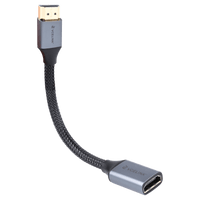
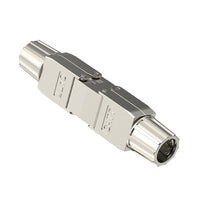

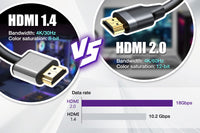
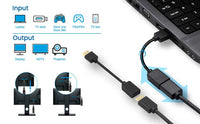
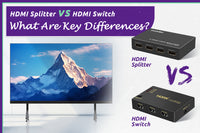
Be the first one to comment.
Leave a comment